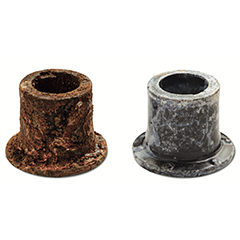‘It’s hard to find good help these days.’ How many times have you heard that phrase? More times than there are entries on your CV? Skilled tradesmen have grown harder and harder to find, with 52% of contractors saying they are struggling to fill hourly craft positions, according to a September 2020 Associated General Contractors of America survey. When looking specifically at Utility Infrastructure contractors, the rate is 60%. So called ‘Baby Boomers’, who predominantly perform these skilled trade roles, are retiring at an increasing rate, and the western world’s emphasis on college education is not producing enough laborers to replace them.
As the world modernizes and pivots to new utility infrastructure, the demand for skilled laborers will continue to outstrip supply, and contractors will fight over the shrinking pool of candidates. We must take a few steps back and remind ourselves, our employees, and our target candidates who we are, what we are passionate about, and what we can offer each other in terms of personal and corporate achievement and growth.
Time to onboard labor
Infrastructure and construction projects innovate and evolve with the times, and the skills and tools needed from laborers follow suit. It likely goes without saying, but this has become an even larger challenge than finding personnel to hire in the first place. If we do not properly train and equip new additions to our workforce, they grow frustrated and lose motivation to learn and contribute. Engineering and manufacturing teams do the yeoman’s work of preparing designs and components for modularity and remote global deployment, but the work phases of assembly, fastening, and inspection in the field will always remain and require distinct attention to detail.
Depending on the type of structure and geography in which it is installed, this may be welding, bolting, riveting, or some mix thereof. While these joining technologies have existed for decades, their capabilities continue to be expanded and stretched. For welding that may look like robotic automation, high strength steel joints, mixed material joints, or welding in extreme environmental conditions.
Bolting solutions now employ exotic material grades, tightening into the plastic region or with complex multi-stage tightening methods, and post-installation inspection, re-torquing, and marking. Riveting is a very flexible and affordable solution, but there is much interplay between fastener and joint, quality and consistency often varies widely, and vibration and corrosion resistance in long term installations may prove challenging.



























